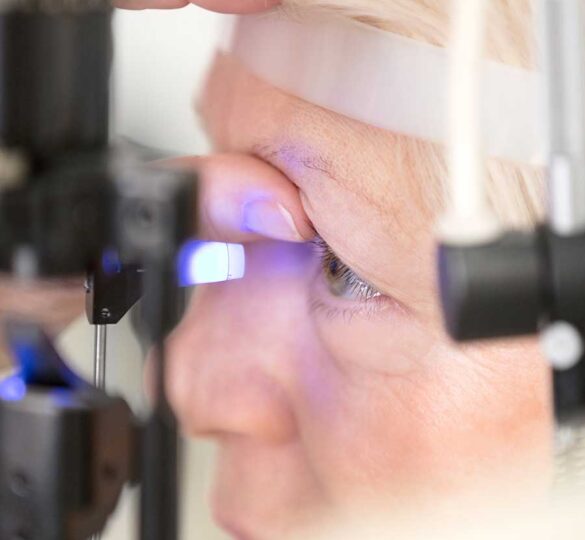Rare Forms of Glaucoma
Although primary open-angle glaucoma is the most common type of glaucoma, there are many other types of eye disorders that fall under the spectrum of glaucoma.

Following are descriptions of some less-common forms of glaucoma.
Neovascular glaucoma
Neovascular glaucoma is caused by the abnormal formation of new blood vessels on the iris and over the eye’s drainage channels. This type of glaucoma never occurs on its own and is always associated with other abnormalities, most often diabetes. The new blood vessels block the eye’s fluid from exiting through the trabecular meshwork, causing an increase in eye pressure. This type of glaucoma is very difficult to treat. Studies have shown some success with the use of drainage implants.
Childhood Glaucoma
Childhood Glaucoma refers to the presence of glaucoma in a child, and occurs in 1 out of every 10,000 births in the United States. Congenital glaucoma is the common term used for a glaucoma diagnosed in infancy or early childhood. This glaucoma is caused by abnormal intraocular fluid drainage from the eye as a result of a blocked or defective trabecular meshwork (the mesh-like drainage canals in the eye). Congenital glaucoma may be due to an hereditary defect or abnormal development during pregnancy.
In other cases, an abnormal drainage system may be the result of some other disease in the eye which results in secondary glaucoma. In these cases, the glaucoma may be associated with recognizable iris (the colored part of the eye), corneal, or other eye problems.
Treatment for childhood glaucoma varies depending on the age of the child and severity of the disease. Treatment options include medications, laser surgery or filtering surgery.
Pseudoexfoliation Syndrome
Pseudoexfoliation syndrome occurs when a flaky, dandruff-like material peels off the outer layer of the lens within the eye. The material collects in the angle between the cornea and iris and can clog the drainage system of the eye. This clogging can cause a build-up of eye pressure and may lead to a type of glaucoma called pseudoexfoliative glaucoma. Long recognized as common in those of Scandinavian descent, pseudoexfoliation syndrome is now seen more frequently in people of other ethnicities as well. Treatment for this syndrome includes medications, laser therapy, and filtering surgery.
Irido Corneal Endothelial Syndrome (ICE)
ICE is a rare form of glaucoma which usually is found in only one eye. In this condition, cells on the back surface of the cornea spread over the eye’s drainage tissue and across the surface of the iris. This causes an increase in eye pressure, which can damage the optic nerve. These cells also form adhesions that bind the iris to the cornea, further blocking the drainage channels.
ICE occurs more frequently in light-skinned females. Symptoms can include hazy vision upon awakening and the appearance of halos around lights. ICE is difficult to treat and laser therapy is not an effective therapy. ICE is usually treated with medications and/or filtering surgery.